Review by Pete Vack
Above, one is faced with the ultimate wedge, and an Alfa Romeo to boot (but there was no boot). The Alfa T33 as transformed by Leonardo Fioravanti encourages one to think about the wedge designs famous from the 1960s to the 1990s. Although not the ideal configuration for an automobile (which at least back then needed the human body/brain to conduct the device along roads), the wedge designs were perhaps more widespread than we think, and had an influence on automotive design that is still reflected in of all things, the Tesla Cybertruck.
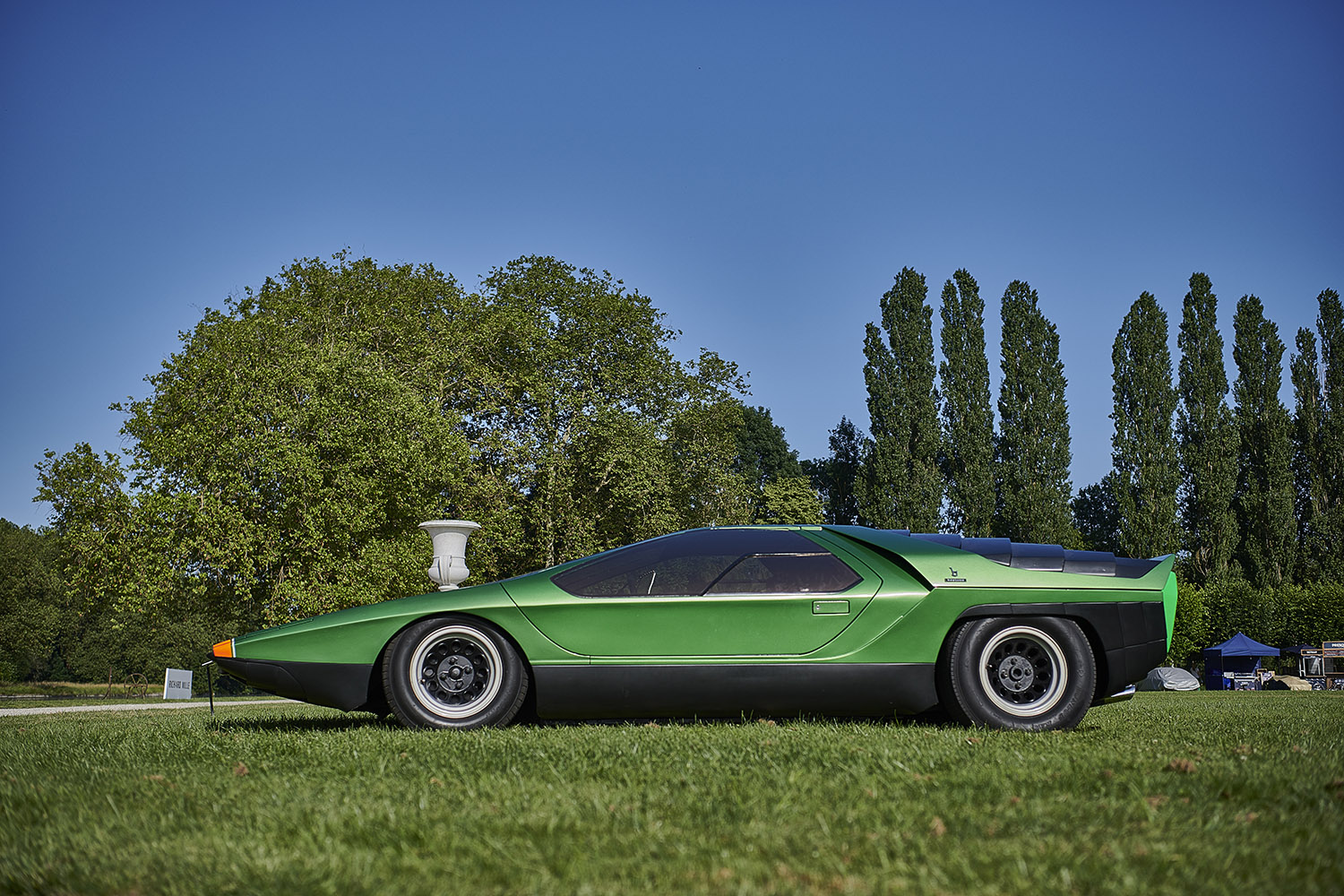
Gandini’s Carabo, first shown at the Paris Salon, October 3, 1968, made everyone start with a clean sheet of paper.
Here are a few questions we thought worth posing, answered in the book at hand and opined at the end of this review:
1. What was perhaps the first example of a wedge design?
2. What was the most outrageous?
3. What was the most sublime?
4. What was the most famous?
5. Why on earth would someone design a car in the shape of a wedge?
6. What hi-performance car manufacturer shunned the wedge?
7. Who were the Masters of the Wedge?
8. What manufacturer still pays homage to the wedge?
Which begs another question, what is a wedge and how is it defined?
In the preface Sen defines what a wedge is, without over-extrapolation he provides a clear sense of what could be a murky topic. Is the last TR7, the [wedge] shape of things to come, actually a wedge? NO? What about the Fiat X/19? Well, yes. A wedge is defined incompletely as a piece of material (varied) that is a pointed edge at one end and a wide edge at the other. In the drawings below, former BMW designer Jean-Paul Oyono characterizes the wedge by looking at the angle of the median line of some famous wedgies:
In this set of drawings from the Centro Stile Bertone, we see another take on the median line as applied to a few of Bertone’s show cars. Passenger cars usually need not apply, while the Miura doesn’t quite make the cut as the Stratos HF Zero nears perfection.
Sen looks at other designs that qualify as a wedge, such as the De Tomason Pantera, Tom Tjaarda’s work with Ghia, and the legendary and roadworthy Lamborghini Countach LP500. One might recall Paolo Martin’s Ferrari 512 Modulo? In an interesting aside that constitutes a chapter, Sen goes into detail on Martin’s design, which looks very wedgie but sadly droops off at the rear, disqualifying it from the finals.
Demystifying the wedge seemed second nature to the industrious Gautam Sen, whose work on the remarkable career of Marcello Gandini is as legendary as the subject itself; Gandini was perhaps most responsible for the wedge. Sen realized there were no books on the subject when he was asked to write an article on wedge-shaped cars by the Pebble Beach Concours committee. This book is the outcome of his research and interest in the subject.
What resulted was in good part a romp through the history of automotive design, from torpedoes to teardrops, tailfins to Kamm tails, and from the rectilinear to the wedge…all names of chapters that lead up to defining the wedge by illustrating the concept from the Carabo to the last vestiges of a beautiful but perhaps impractical line of thought and reality.
This is a large format, colorful layout that draws one in and merits attention, no matter how familiar the subject. Sen presents thoughtful insights about the development of automobile design, and how we get from the early attempts at streamlining to the wedge shape, which is the extreme embodiment of the slippery shape. We have focused here on the more spectacular wedge designs, but in his book, Sen has provided many interesting examples of the wedge in production designs. But for us, they are lesser lights.
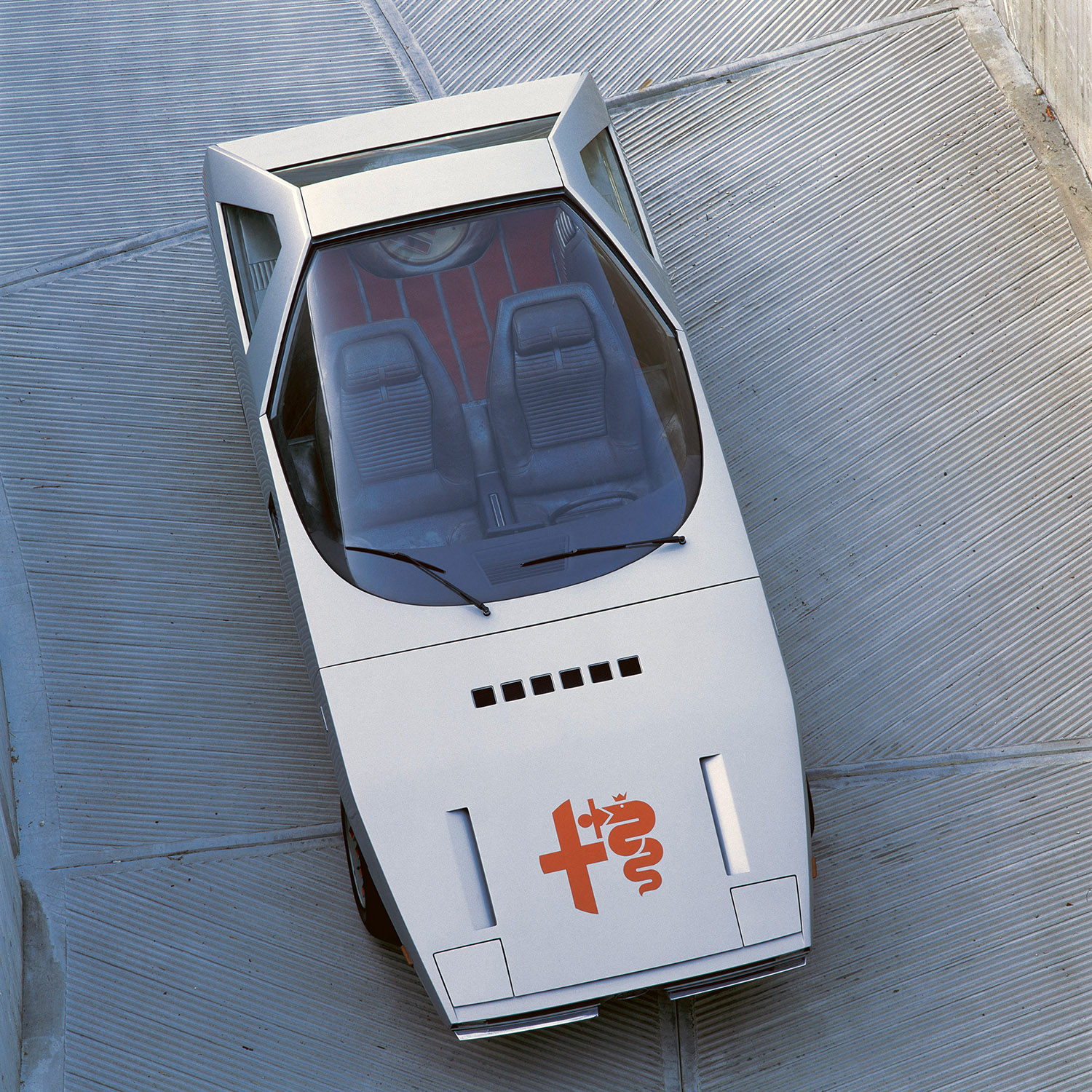
Giugiaro’s Alfasud-based Caimano, seen at the 1971 Turin Auto Show, allowed space for people but this overhead view is the best angle.
We owe thanks to Sen for this book, which is fun, fresh, insightful, and fills a gap in the history of exotic car design. Don’t hesitate on this one; it has been out for a while and supplies are limited.
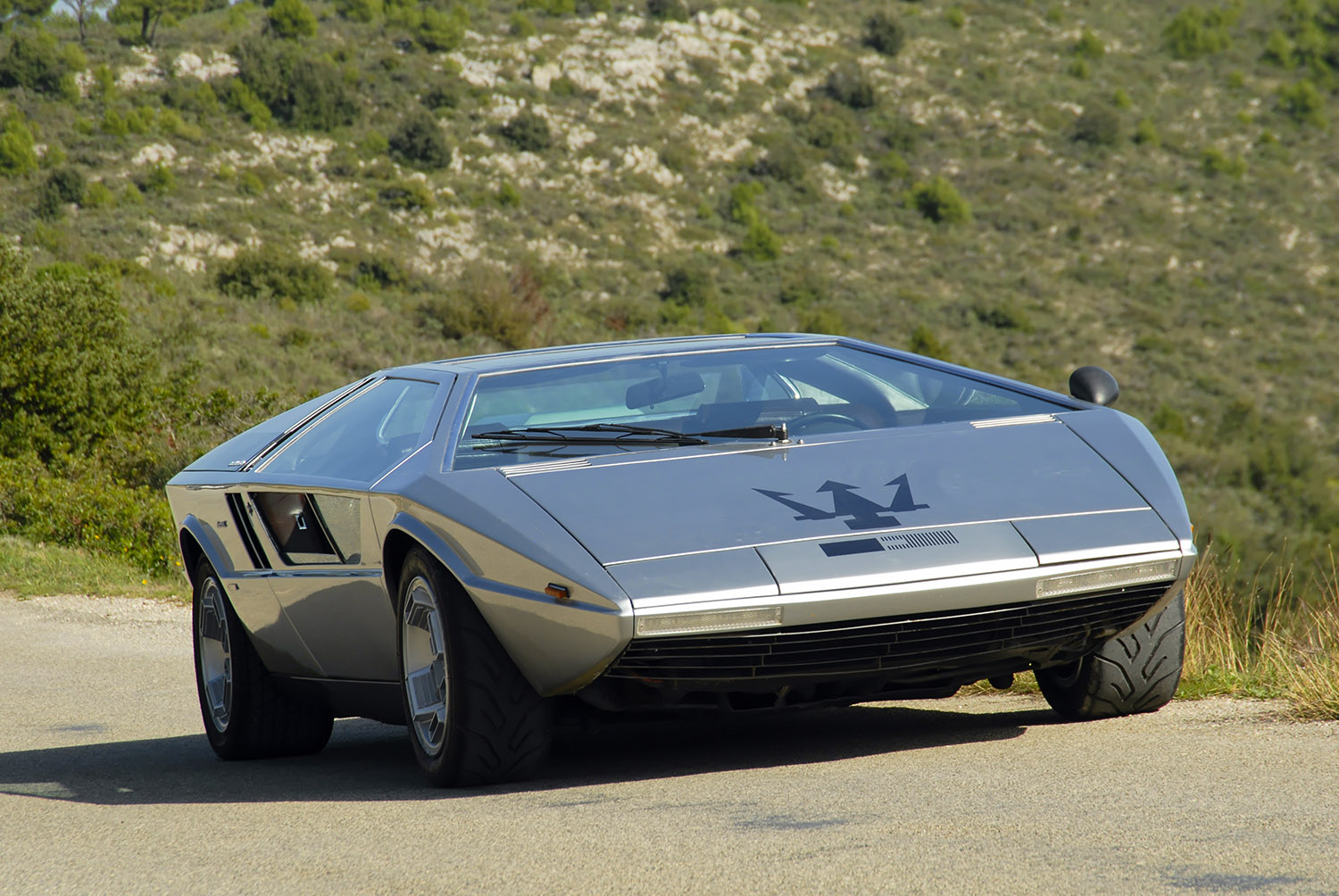
What Giugiaro did with the 1971 Bora-based Boomerang was to combine the earlier origami style with the wedge. Whatever, it was both beautiful and functional, judged by many to be a masterpiece.
Answers to the questions I shouldn’t have asked…
1. Alfa Coda Tronca
2. Alfa Cuneo
3. Alfa Carabo
4. Lancia Stratos Zero
5. As a design study
6. Ferrari
7. Gandini, Giugiaro, Tom Tjaarda, Ercole Spada, William Towns, Oliver Winterbottom
8. Lamborghini
Click on ad to Order
A definitive history of the cars from the Wedge Era, with more than 250 cars featured
Personal quotes and experiences from six of the most important wedge designers
ISBN: 978-1-956309-18-8
Page count: 480
Images and Illustrations: 653
Page size: 219 x 304mm
First published: August 2024
$150
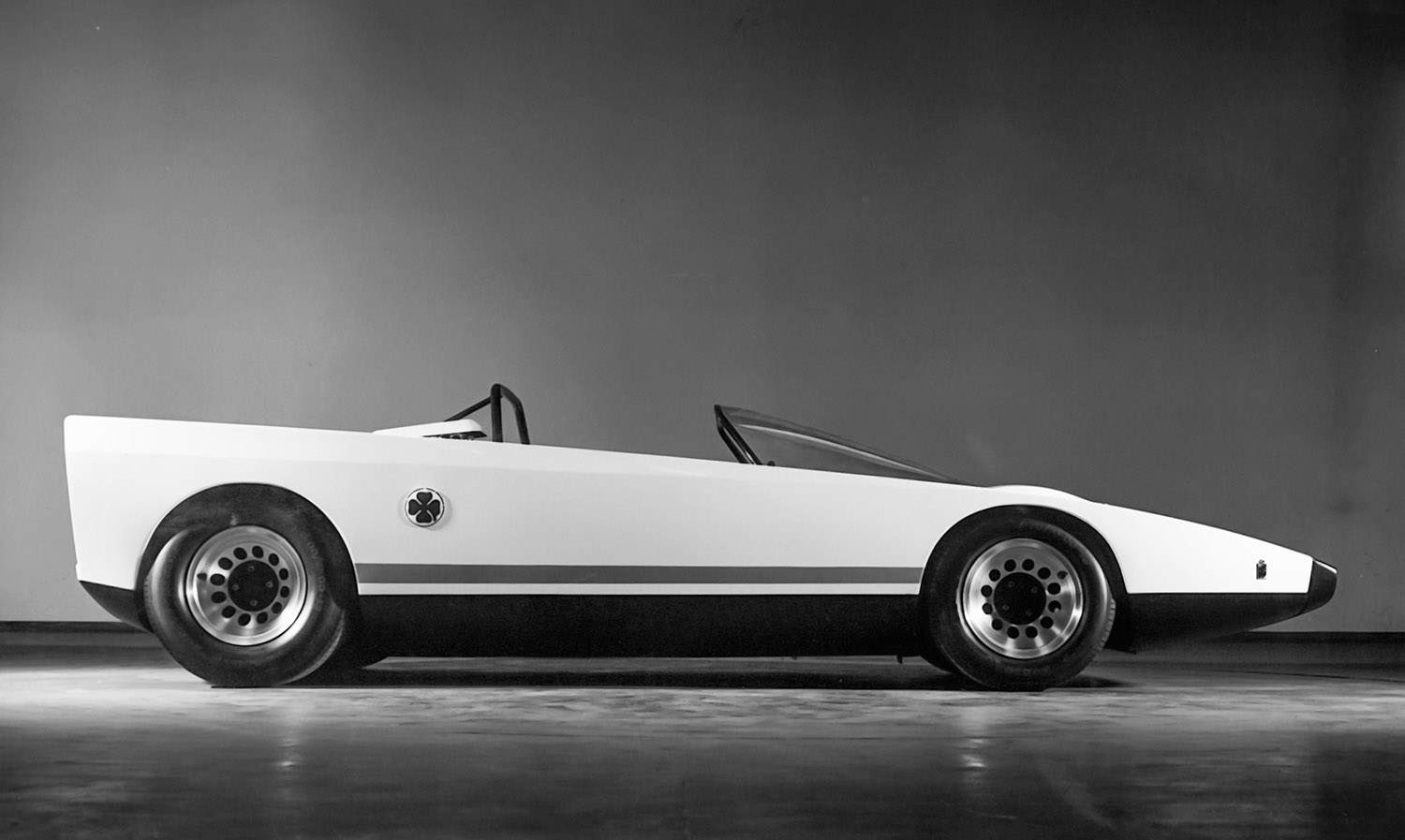

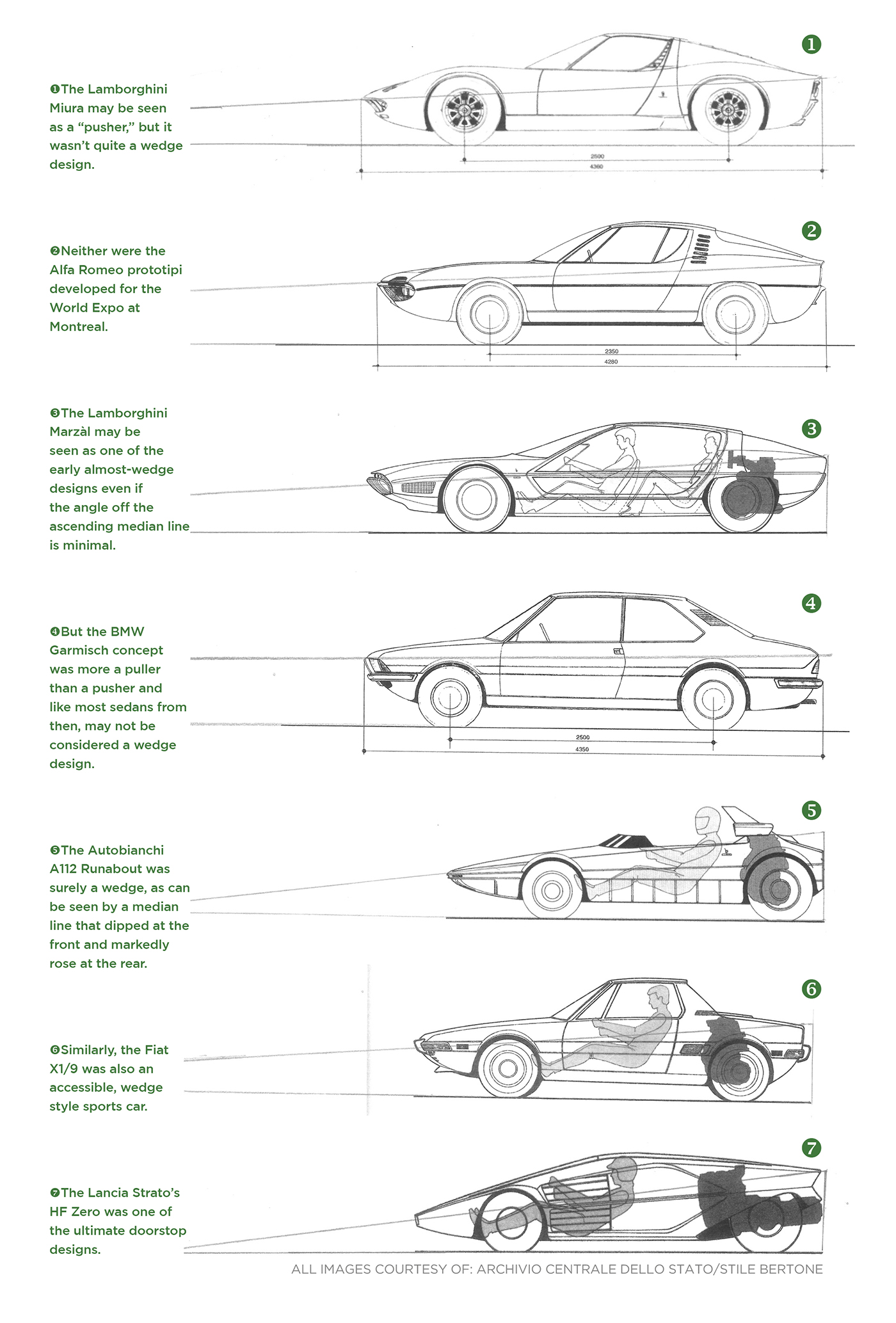
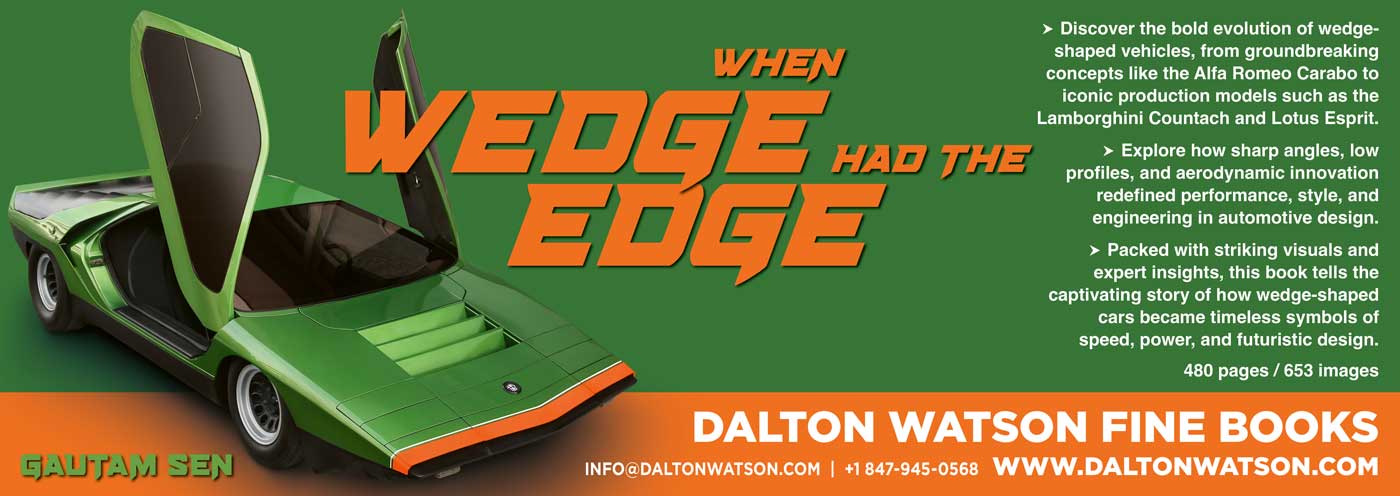
what about the osi alfa scarabeo—that i just missed…
Toly, always good to hear from you!
Gautam didn’t forget the OSI Scarabeo, and mentioned that there were actually three built, the first was much more like the Ferrari Breadvan while the later ones had more of a wedge shape. He included a photo of the rarely seen first version.
Pete
The profile shot of Fioravanti’s Alfa Cuneo is somewhat misleading, as the tail end of the wedge is actually … fins! Still, a very wedgy design. See:
https://cdn.shopify.com/s/files/1/0905/5702/2506/files/Rosario-Liberti-Alfa-Romeo-33s-451.jpg?v=1739274783